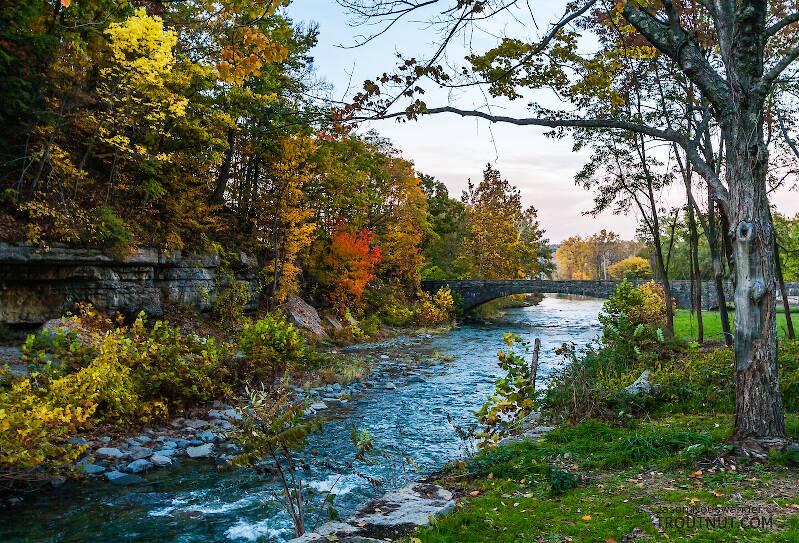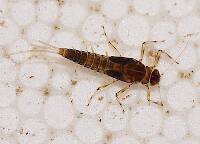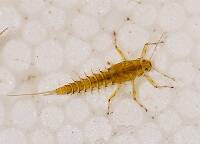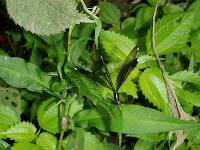
Hex Mayflies
Hexagenia limbata
The famous nocturnal Hex hatch of the Midwest (and a few other lucky locations) stirs to the surface mythically large brown trout that only touch streamers for the rest of the year.
Featured on the forum

This specimen keys pretty easily to Onocosmoecus, and it closely resembles a specimen from Alaska which caddis expert Dave Ruiter recognized as this genus. As with that specimen, the only species in the genus documented in this area is Onocosmoecus unicolor, but Dave suggested for that specimen that there might be multiple not-yet-distinguished species under the unicolor umbrella and it would be best to stick with the genus-level ID. I'm doing the same for this one.

Troutnut is a project started in 2003 by salmonid ecologist Jason "Troutnut" Neuswanger to help anglers and
fly tyers unabashedly embrace the entomological side of the sport. Learn more about Troutnut or
support the project for an enhanced experience here.
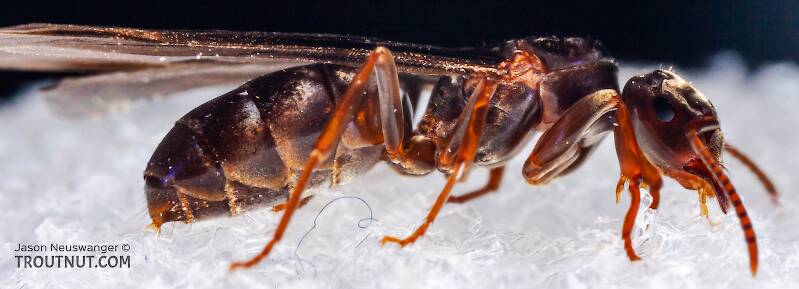
I collected this flying ant from the surface of a popular Catskill trout stream, where its species prompted steady rising from selective trout for several late-morning hours. It was mixed with smaller ants of a different color, and I photographed one of them too.
Troutnut on Oct 3, 2006October 3rd, 2006, 4:17 pm EDT
I had a great morning fishing to flying ants in the Catskills on September 5th. At least a few fish were rising steadily in every pool on my selected stretch of the Neversink, and flying ants were abundant in the air and on the water for hours.
There were two types of ants which I collected and photographed this large, rusty-tinted variety and a smaller type. I'm curious: were they two different species, or different-looking males and females of the same species?
Many ants were descending to the water in pairs, presumably mating. I hadn't yet noticed the difference in sizes, so I didn't check to see if each pair had one large and one small ant.
There were two types of ants which I collected and photographed this large, rusty-tinted variety and a smaller type. I'm curious: were they two different species, or different-looking males and females of the same species?
Many ants were descending to the water in pairs, presumably mating. I hadn't yet noticed the difference in sizes, so I didn't check to see if each pair had one large and one small ant.
Jason Neuswanger, Ph.D.
Troutnut and salmonid ecologist
Troutnut and salmonid ecologist
Troutnut on Oct 24, 2006October 24th, 2006, 5:59 am EDT
I got a great answer to this question by email from Dr. Greg Paulson, who teaches entomology in the biology department at Shippensburg University. They are two different species:
I haven't had time to come up with a definitive id but those ants are two different species. Winged males and females can be easily differentiated by the size of the head relative to the thorax. When viewed from above a male's head is almost always narrower than the thorax. The head of a female is as wide, or wider, than the thorax.
Jason Neuswanger, Ph.D.
Troutnut and salmonid ecologist
Troutnut and salmonid ecologist
Quick Reply
Related Discussions
Topic
Replies
Last Reply
Brachycentrus americanus on the Lower Sacramento River California
In the Caddisfly Species Brachycentrus americanus by Troutguide
In the Caddisfly Species Brachycentrus americanus by Troutguide
0
Oct 29, 2016
by Troutguide
by Troutguide
1
Sep 21, 2008
by GONZO
by GONZO
1
Sep 9, 2008
by GONZO
by GONZO
0
Jul 3, 2006
by Troutnut
by Troutnut

